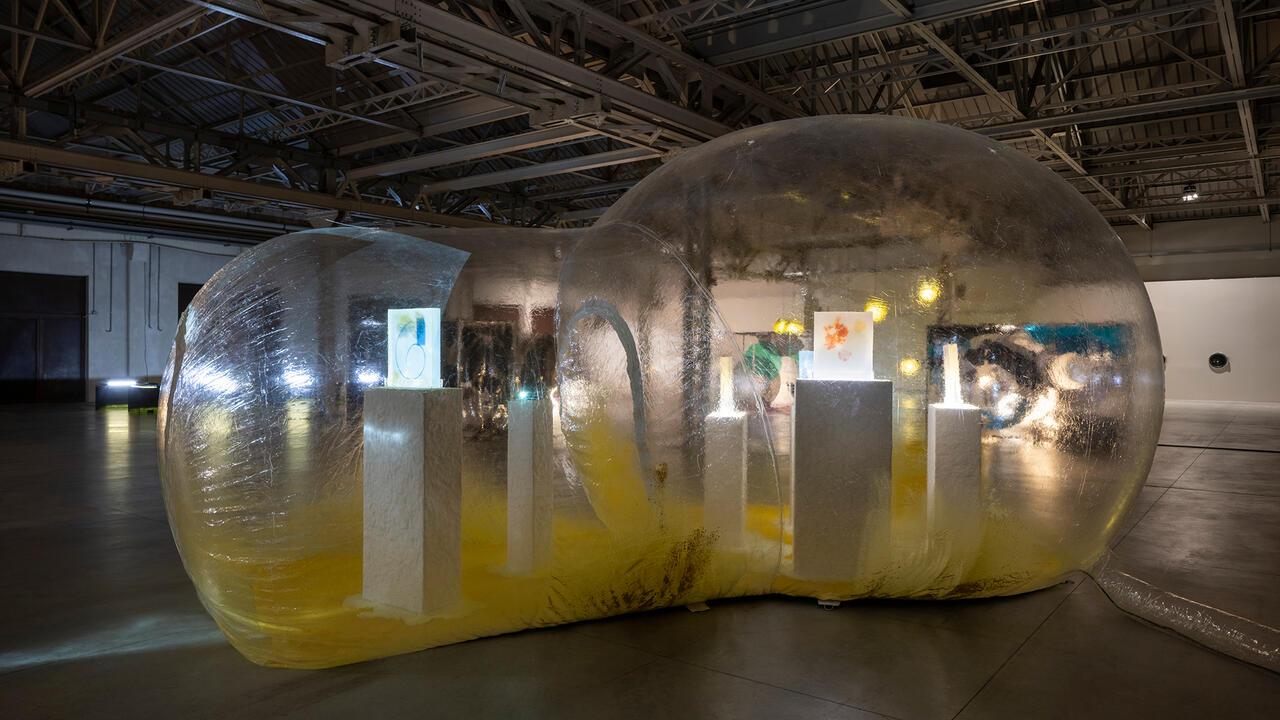Anna Maria Maiolino
Galleria Raffaella Cortese, Milan, Italy
Galleria Raffaella Cortese, Milan, Italy

‘A writer’s homeland [...] is his tongue’, claimed Roberto Bolaño upon receiving an award for his 1998 novel, Los Detectives Salvajes (The Savage Detectives). Bolaño’s story takes place in Mexico, where he lived for several years, and follows the adventures of a gang of young poets, the Visceral Realists, who embark on a quest for Utopia, just a few years after the repression of the students’ movement and the Tlatelolco massacre of 1968. Around that same time, poetry, displacement and visceralidade (viscerality, meant as a subversive, irrepressible intensity of the body and its subjective expressions) were aspirations of Anna Maria Maiolino’s art works. Born in 1942, in one of the poorest regions of Southern Italy, at the age of 12 she moved to Venezuela and then to Brazil with her mother, father and nine brothers. In Rio de Janeiro, she attended the painting and engraving workshops of the National School of Fine Arts and became involved in the Neo-Concrete movement alongside Lygia Clark, Lygia Pape and Hélio Oiticica (who included her in the groundbreaking exhibition ‘Nova Objetividade Brasileira’ [New Brazilian Objectivity] at Museu de Arte Moderna do Rio de Janeiro in 1967). From 1968 to 1971 Maiolino lived in New York with her husband, artist Rubens Gerchman, along with Oiticica and Luis Camnitzer, and there, while again lost in translation (she didn’t speak English) and with two young children to raise, she started to define her own identity as an artist via artist’s books and experimental poems through the language she found was truly her own, Portuguese.
Speech and language were recurring themes in Maiolino’s exhibition at Galleria Raffaella Cortese, which focused on the early phases of her production in the 1970s and ’80s – books, experimental films, videos, photos – beginning with her return to Rio in 1971. By then the Brazilian regime had reached its darkest hours, and reality poured into the works with violent and traumatic echoes. Maiolino’s first Super-8 film, In-Out (Antropofagia) (1973), is a close-up on two mouths – one male, one female – first taped shut, then trying to talk inarticulately, being obstructed by an egg, swallowing or regurgitating long, multicoloured strings – a piece close to Clark’s Baba Antropofágica (Cannibalistic Dribble) of the same year, and sharing the same source: Oswald de Andrade’s ‘Manifesto Antropófago’ (Cannibal Manifesto, 1928), which rooted Brazilian Modernism in the cannibalization and creative assimilation of other models and languages. In the ‘photo–poem–action’ É O Que Sobra (What is Left Over, 1974), Maiolino portrays herself with a pair of scissors in hand, trying to cut off her tongue and her nose; in X (1974) she almost pokes out her eye. The mouth of the blindfolded artist is shouting as if under torture in the ghastly video Y (1974), which was projected at the bottom of a long corridor. At the time, Maiolino wrote: ‘It is a way of reflecting, making, or trying to make of this act of poetic freedom one of resistance to that which is established and imposed by the military dictatorship that has taken control of our life.’ All these works also seem to mark Maiolino’s path of liberation, individuation and the determined conquest of a right to speech as a woman, by breaking away from the constraints of her upbringing and refusing to accept oppression.
Another photo–poem–action, Por um Fio (By a Thread, 1976), sees her establishing a matrilinear genealogy, by chewing the same thread which links the artist’s mouth to that of her mother and daughter. In the black and white photographic series ‘Vida Afora’ (Life Line, 1981), the artist metaphorically ventures out in the streets of Rio as much on the difficult grounds of personal/political daily life. Here Maiolino uses an egg balanced on the threshold of a step as an autobiographical reference. The exhibition stops shortly before Maiolino’s encounter with clay in the late ’80s, which would then become her favourite sculptural medium, marking a new phase of her development – analyzed in her current show at Camden Arts Centre, London, and her upcoming retrospectives at Fundació Antoni Tàpies, Barcelona and the Museum of Modern Art in New York.























